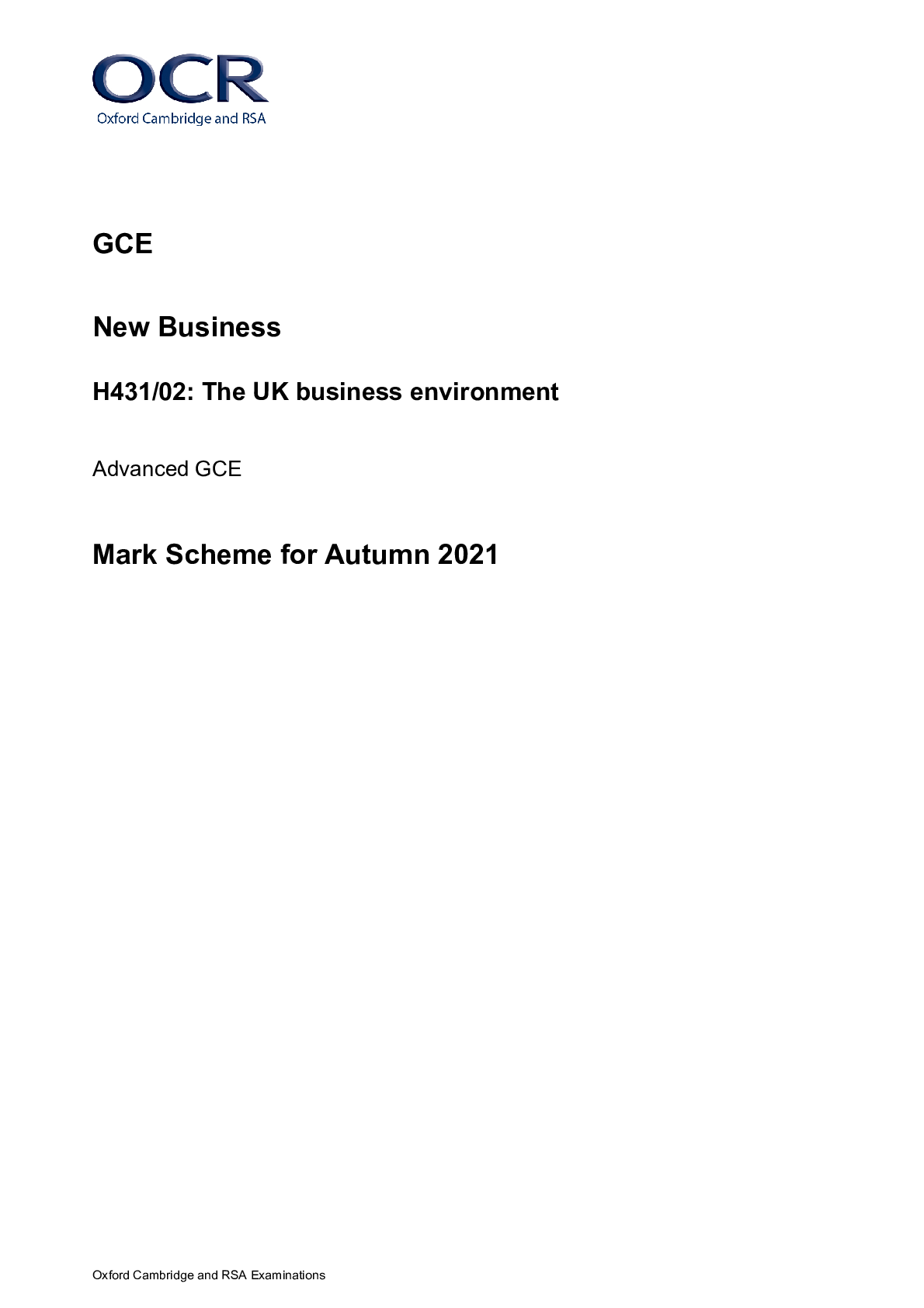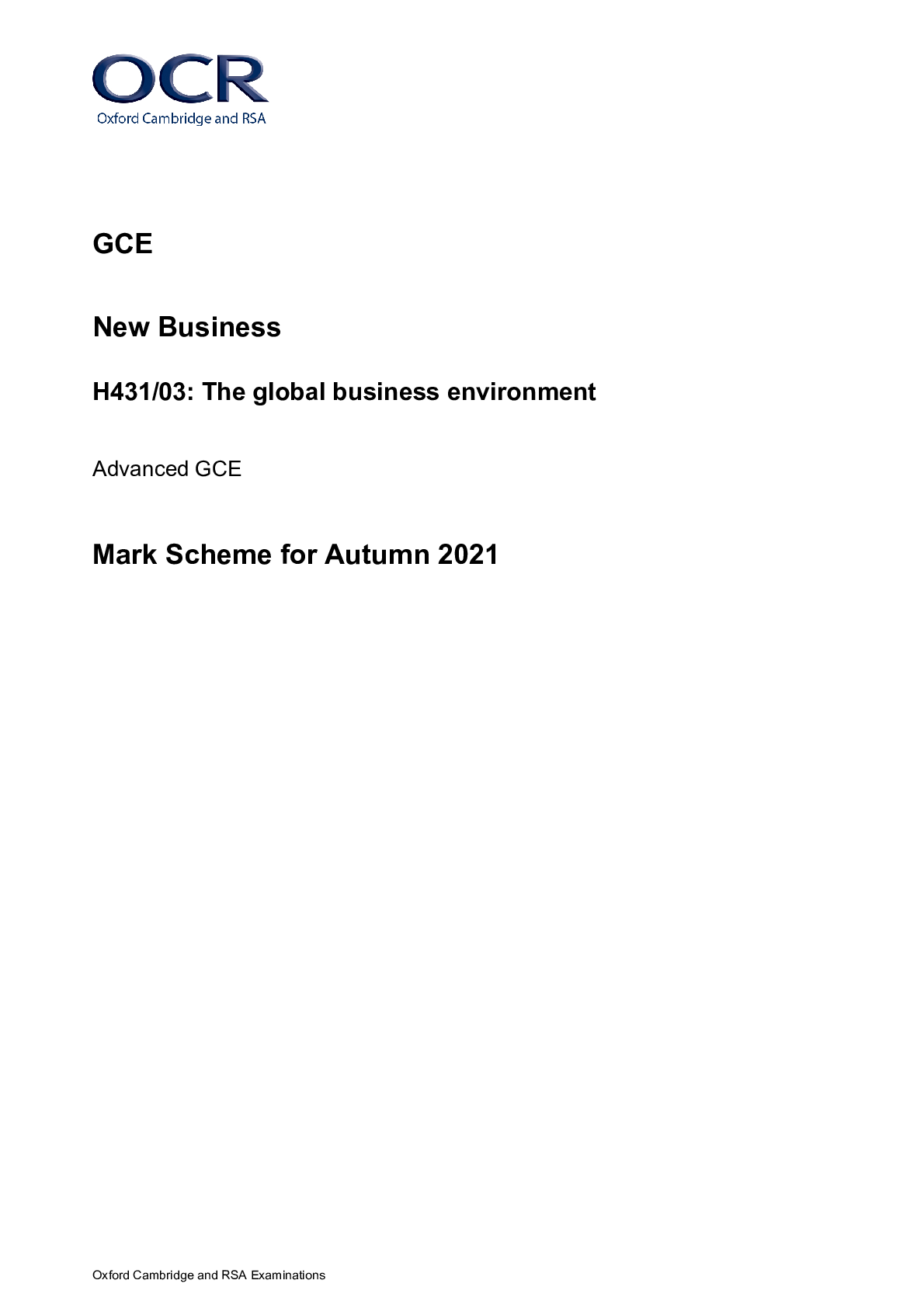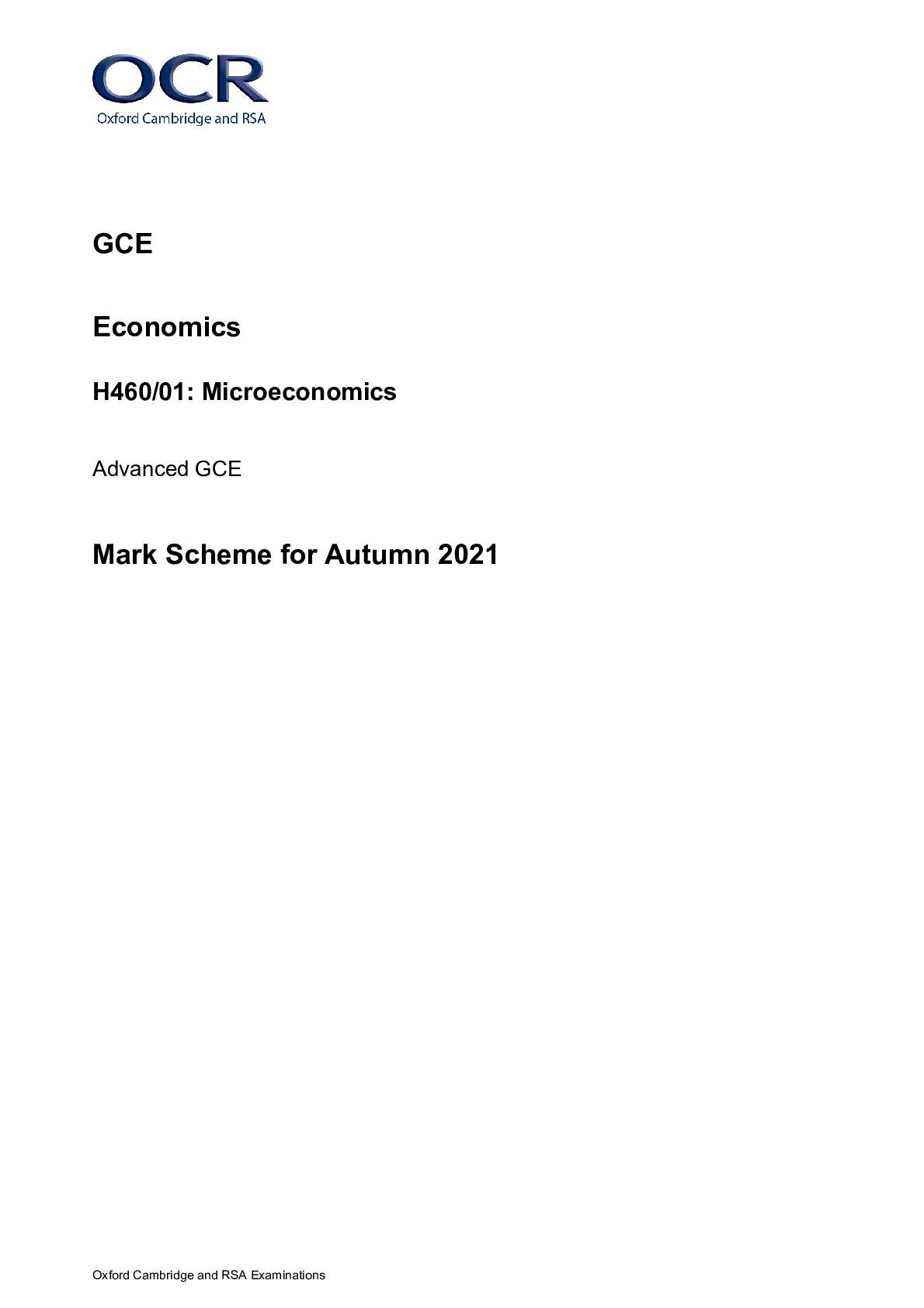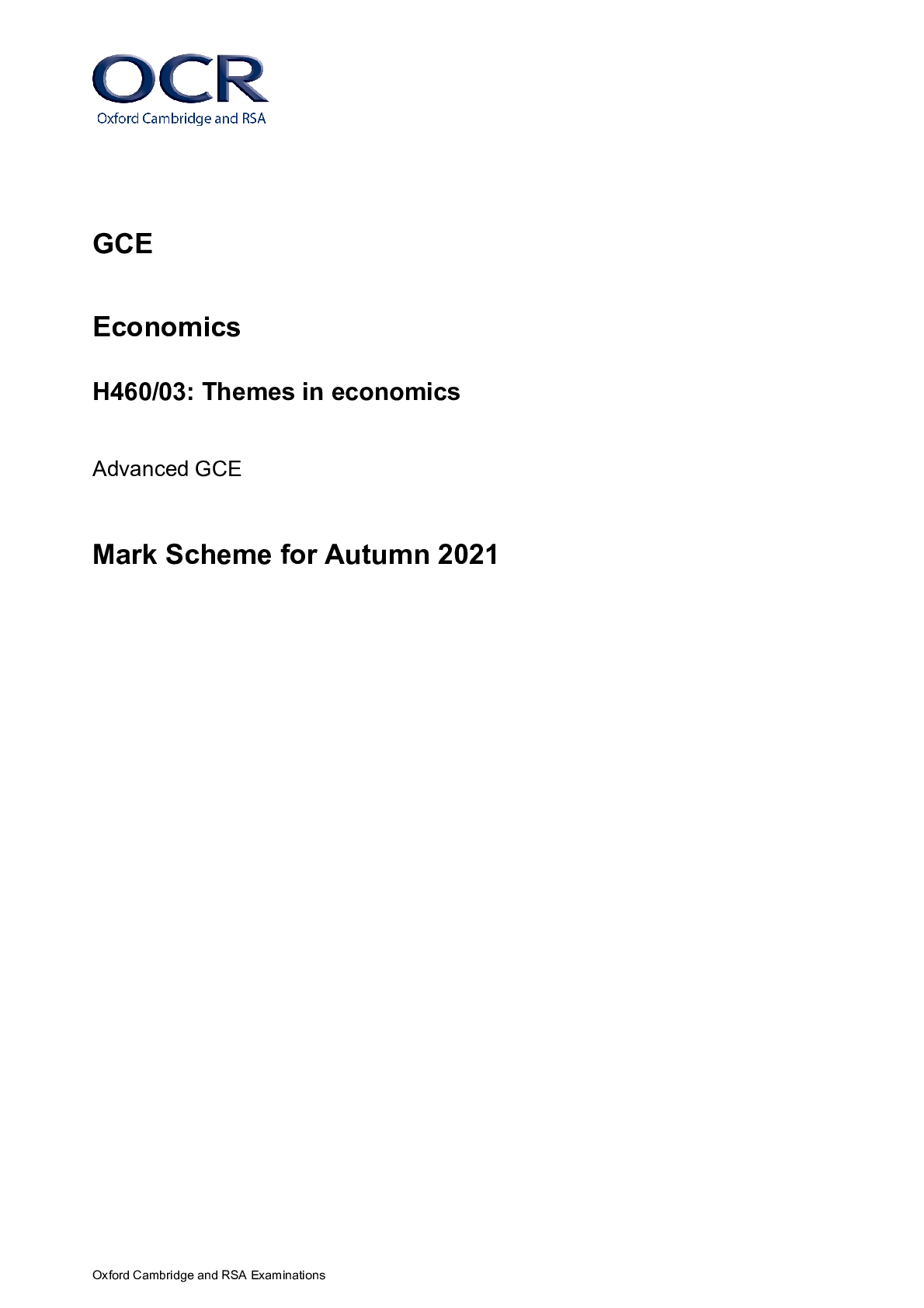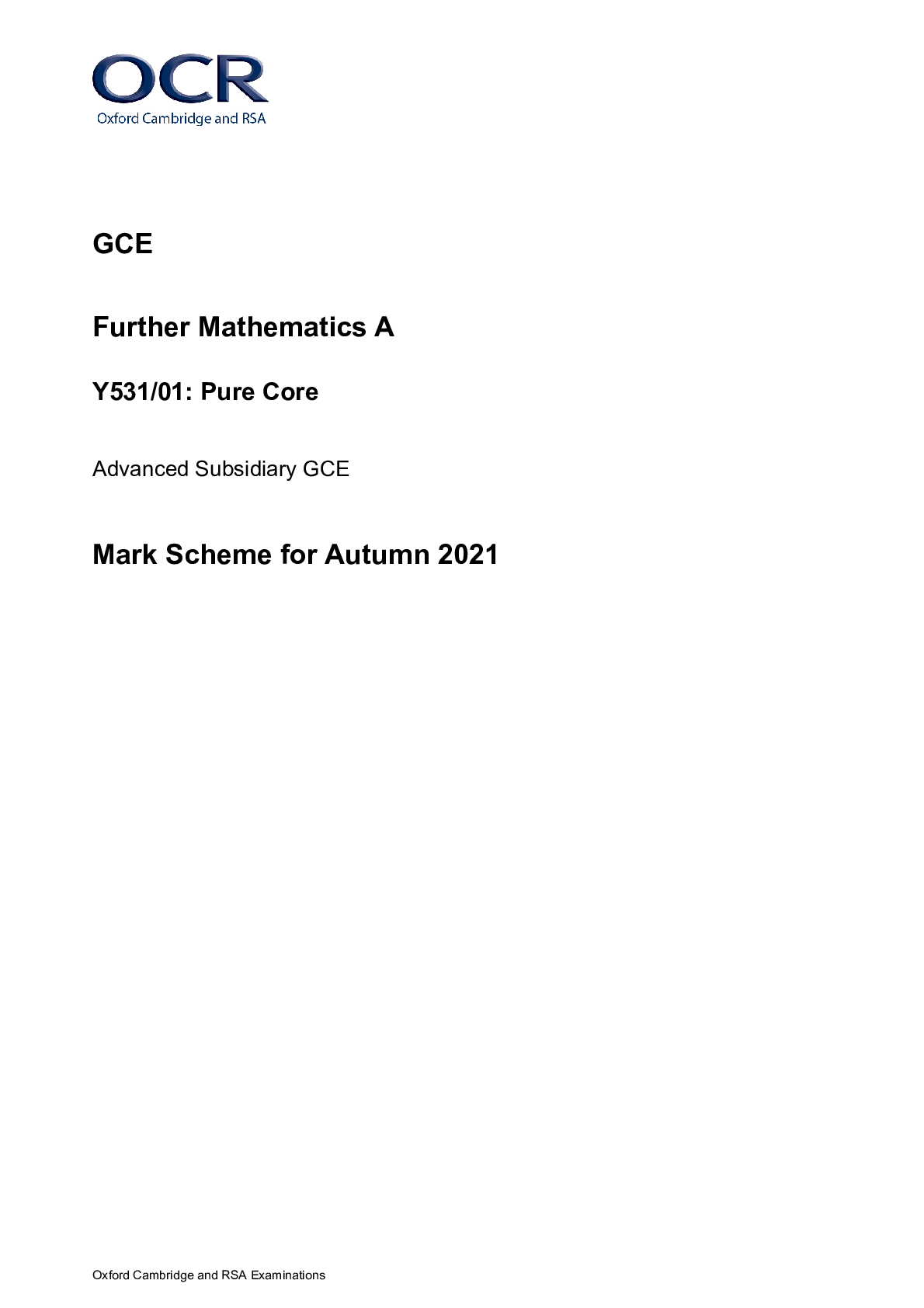Religious Studies > MARK SCHEME > GCE Religious Studies H573/02: Religion and ethics Advanced GCE Mark Scheme for Autumn 2021 (All)
GCE Religious Studies H573/02: Religion and ethics Advanced GCE Mark Scheme for Autumn 2021
Document Content and Description Below
GCE Religious Studies H573/02: Religion and ethics Advanced GCE Mark Scheme for Autumn 2021 Oxford Cambridge and RSA Examinations GCE Religious Studies H573/02: Religion and ethics Advanced... GCE Mark Scheme for Autumn 2021Oxford Cambridge and RSA Examinations OCR (Oxford Cambridge and RSA) is a leading UK awarding body, providing a wide range of qualifications to meet the needs of candidates of all ages and abilities. OCR qualifications include AS/A Levels, Diplomas, GCSEs, Cambridge Nationals, Cambridge Technicals, Functional Skills, Key Skills, Entry Level qualifications, NVQs and vocational qualifications in areas such as IT, business, languages, teaching/training, administration and secretarial skills. It is also responsible for developing new specifications to meet national requirements and the needs of students and teachers. OCR is a not-for-profit organisation; any surplus made is invested back into the establishment to help towards the development of qualifications and support, which keep pace with the changing needs of today’s society. This mark scheme is published as an aid to teachers and students, to indicate the requirements of the examination. It shows the basis on which marks were awarded by examiners. It does not indicate the details of the discussions which took place at an examiners’ meeting before marking commenced. All examiners are instructed that alternative correct answers and unexpected approaches in candidates’ scripts must be given marks that fairly reflect the relevant knowledge and skills demonstrated. Mark schemes should be read in conjunction with the published question papers and the report on the examination. © OCR 2021H573/02 Mark Scheme October 2021 2 1. Annotations Annotation Meaning Level one – to be used at the end of each part of the response in the margin. Level two – to be used at the end of each part of the response in the margin. Level three – to be used at the end of each part of the response in the margin. Level four – to be used at the end of each part of the response in the margin. Level five – to be used at the end of each part of the response in the margin. Highlighting a section of the response that is irrelevant to the awarding of the mark. Point has been seen and noted, e.g. where part of an answer is at the end of the script.H573/02 Mark Scheme October 2021 3 2. SUBJECT–SPECIFIC MARKING INSTRUCTIONS Introduction Your first task as an Examiner is to become thoroughly familiar with the material on which the examination depends. You should ensure that you have copies of these materials: • the specification, especially the assessment objectives • the question paper and its rubrics • the mark-scheme. You should ensure also that you are familiar with the administrative procedures related to the marking process. These are set out in the OCR booklet Instructions for Examiners. If you are examining for the first time, please read carefully Appendix 5 Introduction to Script Marking: Notes for New Examiners. Please ask for help or guidance whenever you need it. Your first point of contact is your Team Leader. Information and instructions for examiners The practice scripts provide you with examples of the standard of each band. The marks awarded for these scripts will have been agreed by the Lead Marker and Team Leaders. The specific task-related indicative content for each question will help you to understand how the band descriptors may be applied. However, this indicative content does not constitute the mark scheme: it is material that candidates might use, grouped according to each assessment objective tested by the question. It is hoped that candidates will respond to questions in a variety of ways. Rigid demands for ‘what must be a good answer’ would lead to a distorted assessment. Candidates’ answers must be relevant to the question. Beware of prepared answers that do not show the candidate’s thought and which have not been adapted to the thrust of the question. Beware also of answers where candidates attempt to reproduce interpretations and concepts that they have been taught but have only partially understood.H573/02 Mark Scheme October 2021 4 Using the Mark Scheme Please study this Mark Scheme carefully. The Mark Scheme is an integral part of the process that begins with the setting of the question paper and ends with the awarding of grades. Question papers and Mark Schemes are developed in association with each other so that issues of differentiation and positive achievement can be addressed from the very start. This Mark Scheme is a working document; it is not exhaustive; it does not provide ‘correct’ answers. The Mark Scheme can only provide ‘best guesses’ about how the question will work out, and it is subject to revision after we have looked at a wide range of scripts. Please read carefully all the scripts in your allocation and make every effort to look positively for achievement throughout the ability range. Always be prepared to use the full range of marks. Assessment Objectives Two Assessment Objectives are being assessed in all questions: AO1 (Demonstrate knowledge and understanding of religion and belief) and AO2 (Analyse and evaluate aspects of, and approaches to, religion and belief, including their significance, influence and study). Responses are credited for AO1 for selection, detail and accuracy of the knowledge and understanding of religion and belief deployed. Responses are credited for AO2 for how well the response addresses the question, for candidates using their knowledge and understanding to draw, express and support conclusions in relation to the question posed. Candidates will be assessed on the quality of the conclusions and points they argue and the clarity and success of their argument.H573/02 Mark Scheme October 2021 5 Levels of Response Questions in this paper are marked using a levels of response grid, when using this grid examiners must use a best fit approach. Where there are both strengths and weaknesses in a particular response, particularly imbalanced responses in terms of the assessment objectives, examiners must carefully consider which level is the best fit for the performance. Note that candidates can achieve different levels in each assessment objective, for example a Level 3 for AO1, and a Level 2 for AO2. To use these grids: Determine the level: start at the highest level and work down until you reach the level that matches the answer. Determine the mark within the level: consider the following: Descriptor Award mark On the borderline of this level and the one below At bottom of level Just enough achievement on balance for this level Above bottom and either below middle or at middle of level (depending on number of marks available) Meets the criteria but with some slight inconsistency Above middle and either below top of level or at middle of level (depending on number of marks available) Consistently meets the criteria for this level At top of level Please note that the Assessment Objectives being assessed are listed at the top of the mark scheme. Where a candidate does not address all of the Assessment Objective strands listed, the candidate cannot achieve the top level of response. Assessment of Extended Response The GCE General Conditions of Recognition state that: GCE 5.1 In designing and setting the assessments for a GCE qualification which it makes available, or proposes to make available, and awarding organization must ensure that, taken together, those assessments include questions or tasks which allow Learners to - a) provide extended responses As such, the quality of extended responses are assessed in all questions. While marks are not specifically given for this, descriptors for extended responses can be found in the AO2 Levels of Response in italics.H573/02 Mark Scheme October 2021 6 Level (Mark) Levels of Response for A Level Religious Studies: Assessment Objective 1 (AO1) Demonstrate knowledge and understanding of religion and belief, including: • Religious, philosophical and/or ethical thought and teaching • Approaches to the study of religion and belief Note: The descriptors below must be considered in the context of all listed strands of Assessment Objectives 1 (AO1) and the indicative content in the mark scheme. 6 (14–16) An excellent demonstration of knowledge and understanding in response to the question: • fully comprehends the demands of, and focusses on, the question throughout • excellent selection of relevant material which is skillfully used • accurate and highly detailed knowledge which demonstrates deep understanding through a complex and nuanced approach to the material used • thorough, accurate and precise use of technical terms and vocabulary in context • extensive range of scholarly views, academic approaches, and/or sources of wisdom and authority are used to demonstrate knowledge and understanding 5 (11–13) A very good demonstration of knowledge and understanding in response to the question : • focuses on the precise question throughout • very good selection of relevant material which is used appropriately • accurate, and detailed knowledge which demonstrates very good understanding through either the breadth or depth of material used • accurate and appropriate use of technical terms and subject vocabulary. • a very good range of scholarly views, academic approaches, and/or sources of wisdom and authority are used to demonstrate knowledge and understanding 4 (8–10) A good demonstration of knowledge and understanding in response to the question: • addresses the question well • good selection of relevant material, used appropriately on the whole • mostly accurate knowledge which demonstrates good understanding of the material used, which should have reasonable amounts of depth or breadth • mostly accurate and appropriate use of technical terms and subject vocabulary. • a good range of scholarly views, academic approaches, and/or sources of wisdom and authority are used to demonstrate knowledge and understanding 3 (5–7) A satisfactory demonstration of knowledge and understanding in response to the question: • generally addresses the question • mostly sound selection of mostly relevant material • some accurate knowledge which demonstrates sound understanding through the material used, which might however be lacking in depth or breadth • generally appropriate use of technical terms and subject vocabulary. • A satisfactory range of scholarly views, academic approaches, and/or sources of wisdom and authority are used to demonstrate knowledge and understanding with only partial success 2 (3–4) A basic demonstration of knowledge and understanding in response to the question: • might address the general topic rather than the question directly • limited selection of partially relevant material • some accurate, but limited, knowledge which demonstrates partial understanding • some accurate, but limited, use of technical terms and appropriate subject vocabulary. • a limited range of scholarly views, academic approaches, and/or sources of wisdom and authority are used to demonstrate knowledge and understanding with little success 1 (1–2) A weak demonstration of knowledge and understanding in response to the question: • almost completely ignores the question • very little relevant material selected • knowledge very limited, demonstrating little understanding • very little use of technical terms or subject vocabulary. • very little or no use of scholarly views, academic approaches and/or sources of wisdom and authority to demonstrate knowledge and understanding 0 (0) No creditworthy responseH573/02 Mark Scheme October 2021 7 Level (Mark) Levels of Response for A Level Religious Studies: Assessment Objective 2 (AO2) Analyse and evaluate aspects of, and approaches to, religion and belief, including their significance, influence and study Note: The descriptors below must be considered in the context of all elements of Assessment Objective 2 (AO2) and the indicative content in the mark scheme. 6 (21–24) An excellent demonstration of analysis and evaluation in response to the question: • excellent, clear and successful argument • confident and insightful critical analysis and detailed evaluation of the issue • views skillfully and clearly stated, coherently developed and justified • answers the question set precisely throughout • thorough, accurate and precise use of technical terms and vocabulary in context • extensive range of scholarly views, academic approaches and sources of wisdom and authority used to support analysis and evaluation Assessment of Extended Response: There is an excellent line of reasoning, well-developed and sustained, which is coherent, relevant and logically structured. 5 (17–20) A very good demonstration of analysis and evaluation in response to the question: • clear argument which is mostly successful • successful and clear analysis and evaluation • views very well stated, coherently developed and justified • answers the question set competently • accurate and appropriate use of technical terms and subject vocabulary. • a very good range of scholarly views, academic approaches and sources of wisdom and authority used to support analysis and evaluation Assessment of Extended Response: There is a well–developed and sustained line of reasoning which is coherent, relevant and logically structured. 4 (13–16) A good demonstration of analysis and evaluation in response to the question: • argument is generally successful and clear • generally successful analysis and evaluation • views well stated, with some development and justification • answers the question set well • mostly accurate and appropriate use of technical terms and subject vocabulary. • a good range of scholarly views, academic approaches and sources of wisdom and authority are used to support analysis and evaluation Assessment of Extended Response: There is a well–developed line of reasoning which is clear, relevant and logically structured 3 (9–12) A satisfactory demonstration of analysis and/evaluation in response to the question: • some successful argument • partially successful analysis and evaluation • views asserted but often not fully justified • mostly answers the set question • generally appropriate use of technical terms and subject vocabulary. • a satisfactory range of scholarly views, academic approaches and sources of wisdom and authority are used to support analysis and evaluation with only partial success Assessment of Extended Response: There is a line of reasoning presented which is mostly relevant and which has some structure. 2 (5–8) A basic demonstration of analysis and evaluation in response to the question: • some argument attempted, not always successful • little successful analysis and evaluation • views asserted but with little justification • only partially answers the question • some accurate, but limited, use of technical terms and appropriate subject vocabulary. • a limited range of scholarly views, academic approaches and sources of wisdom and authority to support analysis and evaluation with little success Assessment of Extended Response: There is a line of reasoning which has some relevance and which is presented with limited structure.H573/02 Mark Scheme October 2021 8 1 (1–4) A weak demonstration of analysis and evaluation in response to the question: • very little argument attempted • very little successful analysis and evaluation • views asserted with very little justification • unsuccessful in answering the question • very little use of technical terms or subject vocabulary. • very little or no use of scholarly views, academic approaches and sources of wisdom and authority to support analysis and evaluation Assessment of Extended Response: The information is communicated in a basic/unstructured way. 0 (0) No creditworthy responseH573/02 Mark Scheme October 2021 9 Question Indicative content Marks Guidance 1 ‘Issues raised by euthanasia are best addressed by situation ethics.’ Discuss. The following is a description of possible content only; all legitimate answers and approaches must be credited appropriately. Learners are expected to make use of scholarly views, academic approaches and sources of wisdom and authority to support their argument. The Levels of Response must be used in conjunction with the outlined indicative content. Weak, basic, satisfactory, good and very good responses will differentiate candidates’ skills at: • demonstrating knowledge and understanding of religion and belief in accordance with all relevant strands of AO1 indicated in the coverage grid and • the analysis and evaluation of aspects of, and approaches to, religion and belief AO1 Candidates may demonstrate knowledge and understanding through the use of some of the following materials: • the issue of the concept of sanctity of life and its religious origins whereby human life is made in God’s image and is therefore sacred in value • the issues of the concept of quality of life and its secular origins whereby human life has to possess certain attributes in order to have value • the issues of the nature of voluntary euthanasia whereby a person’s life is ended at their request or with their consent and the nature of 40 (AO1 16) The issues raised by euthanasia may be wide-ranging. The question asks that the focus is on how these issues are best addressed by situation ethics.H573/02 Mark Scheme October 2021 10 Question Indicative content Marks Guidance involuntary euthanasia whereby a person’s life is ended without their consent but with the consent of someone representing their interests • application of Fletcher’s concept of agape and how it might address issues raised by euthanasia • application to issues raised by euthanasia of Fletcher’s six propositions particularly: (1) love is the only thing which is intrinsically good (2) love is the ruling norm in moral decision-making and replaces all laws (3) love and justice are the same thing – justice is love which is distributed (4) love wills the neighbour’s good regardless of whether the neighbour is liked or not (5) love is the goal of the act and justifies any means to achieve that goal (6) love decides on each situation as it arises without a set of laws to guide it • Fletcher’s four working principles and how they might be applied to issues raised by euthanasia: (1) pragmatism – decisions based on experience rather than theory (2) relativism – decisions based on making the absolute laws of Christian ethics relative (3) positivism – decisions begin with belief in the reality and importance of love (4) personalism – decisions recognise that persons, not laws or anything else, are at the centre of this approach. AO2 Candidates may demonstrate evaluation and analysis through the use of some of the following arguments. (AO2 24)H573/02 Mark Scheme October 2021 11 • Some candidates might argue that the statement that issues raised by euthanasia are best addressed by situation ethics is convincing because: o pragmatism, the first of Fletcher’s four working principles, best addresses the issues raised by euthanasia since it is based on experience rather than theory and can adopt to medical/legal changes over time o personalism, the fourth of Fletcher’s four working principles, best addresses the issues raised by euthanasia because the person and not laws or anything else are at the centre of its approach o the fifth of the six propositions - love is the goal of the act and justifies any means to achieve that goal – best addresses issues raised by euthanasia because it takes priority over complex medical and legal advice and guidance o situation ethics is not hampered by being deontological and absolutist and is therefore best able to focus on the consequences of issues surrounding euthanasia o situation ethics best addresses issues raised by euthanasia because it provides a clear, coherent and compassionate approach which is easily understood. • Some candidates might argue that the statement that issues raised by euthanasia are best addressed by situation ethics is not convincing because: o key issues raised by euthanasia such as the sanctity of human life (because it is made in God’s image) and quality of life (that human life has to possess certain attributes in order to have value) are not addressed by situation ethics o agape, which is the key concept of situation ethics, is too vague and ill-defined to be able to address the issues raised by euthanasiaH573/02 Mark Scheme October 2021 12 Question Indicative content Marks Guidance o euthanasia is not best addressed by situation ethics because it is entirely situational and is thus unable to declare any medical action involved as being good, bad, right or wrong in itself o the religious aspect of situation ethics, whereby it is rooted in the Christian concept of agape, means that it cannot be the best approach to euthanasia since it does not allow for entirely secular approaches o natural law, rather than situation ethics, best addresses issues surrounding euthanasia since, through the concept of telos and the primary precepts, it provides a comprehensive context in which these issues can be considered. • Some candidates may combine these views and argue that in certain aspects situation ethics best addresses issues raised by euthanasia because of its focus on agape and personalism, but in other aspects it does not owing to its religious basis and lack of clarity.H573/02 Mark Scheme October 2021 13 Question Indicative content Marks Guidance 2 Evaluate the view that Kantian ethics provides a more useful approach to whistle-blowing than utilitarianism. The following is a description of possible content only; all legitimate answers and approaches must be credited appropriately. Learners are expected to make use of scholarly views, academic approaches and sources of wisdom and authority to support their argument. The Levels of Response must be used in conjunction with the outlined indicative content. Weak, basic, satisfactory, good and very good responses will differentiate candidates’ skills at: • demonstrating knowledge and understanding of religion and belief in accordance with all relevant strands of AO1 indicated in the coverage grid and • the analysis and evaluation of aspects of, and approaches to, religion and belief AO1 Candidates may demonstrate knowledge and understanding through the use of some of the following materials: • the key concept of duty along with the deontological and absolutist approach of Kantian ethics in the area of whistle-blowing within business ethics • Kant’s categorical imperatives (a command to act that is good in itself regardless of consequences), its three formulations and why it is the imperative of morality in the area of whistle-blowing within business ethics 40 (AO1 16) Candidates may illustrate their answers with examples.H573/02 Mark Scheme October 2021 14 Question Indicative content Marks Guidance • application of the significant concept of utility (what will offer the greatest happiness to the greatest number of people) in teleological and relativist approaches to whistle-blowing within business ethics • application of act utilitarianism (calculating the consequences of each situation on its own merits) and of rule utilitarianism (following accepted laws that lead to the greatest overall balance of good over evil, or pleasure over pain) and its use regarding whistle-blowing within business ethics • a business making profits in the context of capitalism, consumerism and globalisation to ensure its survival and expansion and how this might be affected by whistle-blowing • corporate social responsibility whereby a business has responsibility towards the community and environment in terms of stakeholders, such as employees, customers, the local community, the country as whole and governments and how this might be affected by whistleblowing • the approach of good ethics is good business whereby good business decisions are good ethical decisions and how this is connected to whistle-blowing. AO2 Candidates may demonstrate evaluation and analysis through the use of some of the following arguments. • Some candidates might argue that the statement that Kantian ethics provides a more useful approach to whistle-blowing than utilitarianism is convincing because: o the absolutist concept of duty (acting morally according to the good regardless of consequences) is a more useful approach than a relativist one with regard to whistle-blowing as it gives transparency to relationships between the employer and (AO2 24)H573/02 Mark Scheme October 2021 15 employee, the business and its stakeholders, other businesses, world economies, industries, markets and cultures o Kantian ethics provides a more useful approach to whistleblowing whereby the maxim of truth-telling means an employee has a duty regardless of consequences to disclose wrongdoing o the formula of the end in itself in Kantian ethics is a more useful approach to whistle-blowing in the relationships between the employer and employee because it prevents exploitation in the form of child labour and oppressive measures against workers o the formula of the kingdom of ends in Kantian ethics is a more useful approach to whistle-blowing because it prevents a business from being preoccupied with profit-making no matter what the cost o the reliance of Kantian ethics on reason makes it a more useful approach to whistle-blowing because decisions made with regard to the personnel involved are not swayed by sympathy or empathy. • Some candidates might argue that the statement that Kantian ethics provides a more useful approach to whistle-blowing than utilitarianism is not convincing because: o unlike Kantian ethics utilitarianism is a teleological and relativist ethical system which, since it is both flexible and future-oriented, makes it a more useful approach in weighing up the consequences of whistle-blowing o having the goal of maximising utility for stakeholders makes utilitarianism a more useful approach to whistle-blowing since it supports what it is of most benefit for corporate social responsibility o utilitarianism provides a more useful approach to whistle-blowing since it supports whatever outcome will result in the spread of capitalism and consumerism to maximise the pleasure of the majorityH573/02 Mark Scheme October 2021 16 Question Indicative content Marks Guidance o rule utilitarianism provides a more useful approach to whistleblowing since it upholds the importance of past principles, rules and laws which support both profit-making and corporate social responsibility o the concept of utility is an easily understood and common sense one which provides a more useful approach to whistle-blowing than the complex concepts of Kantian ethics. • Some candidates may combine these views and argue that, for example, in some cases Kantian ethics may provide a more useful approach in upholding truth-telling as shown in whistle-blowing whereas in others utilitarianism is more useful because of its concern with the consequences of whistle-blowing.H573/02 Mark Scheme October 2021 17 Question Indicative content Marks Guidance 3 ‘There is no evidence to support the claim that conscience exists.’ Discuss. The following is a description of possible content only; all legitimate answers and approaches must be credited appropriately. Learners are expected to make use of scholarly views, academic approaches and sources of wisdom and authority to support their argument. The Levels of Response must be used in conjunction with the outlined indicative content. Weak, basic, satisfactory, good and very good responses will differentiate candidates’ skills at: • demonstrating knowledge and understanding of religion and belief in accordance with all relevant strands of AO1 indicated in the coverage grid and • the analysis and evaluation of aspects of, and approaches to, religion and belief AO1 Candidates may demonstrate knowledge and understanding through the use of some of the following materials: • details of Freud’s psychological approach to psychosexual development (early childhood and place of the libido) • Freud’s idea of the id (instinctive impulses that seek satisfaction in pleasure) • Freud’s idea of the ego (mediates between the id and the demands of social interaction) 40 (AO1 16)H573/02 Mark Scheme October 2021 18 Question Indicative content Marks Guidance • Freud’s idea of the super-ego (contradicts the id and working on internalised ideals from parents and society tries to make the ego behave morally) • Aquinas’s use of ratio (reason placed in every person as a result of being created in the image of God. • Aquinas’s use of synderesis (inner principle directing a person towards good and away from evil) • Aquinas’s use of conscientia (a person’s reason making moral judgments). AO2 Candidates may demonstrate evaluation and analysis through the use of some of the following arguments. • Some candidates might argue that the statement that there is no evidence to support the claim that conscience exists is convincing because: o the claim that conscience exists at all is undermined by the fact that Aquinas and Freud provide conflicting accounts of the conscience meaning that neither is necessarily correct o Fletcher’s situation ethics proposes that there is no such thing as ‘a conscience’ since the word should be seen as a verb rather than a noun in describing attempts to make decisions creatively o conscience does not exist as such since the word is an umbrella term covering various factors involved in moral decision-making, (AO2 24)H573/02 Mark Scheme October 2021 19 such as culture, environment, genetic predisposition and education o the evidence for the existence of conscience provided by Aquinas is based entirely on the a priori belief in the existence of God which is not accepted by a secular approach o the evidence for the existence of conscience provided by Freud is based on an inadequate and outdated model of the workings of the conscious and unconscious human mind. • Some candidates might argue that the statement that there is no evidence to support the claim that conscience exists is not convincing because: o evidence that conscience exists is provided by the fact that people feel guilt after acts which might be considered bad and wrong o the approach taken by Aquinas is based entirely on the widely accepted concept of ratio which means that through synderesis a person’s conscientia directs them away from evil and towards good in making moral judgments o studies have shown that Freud’s psychological approach through explanation of the id, ego and super-ego is coherent, cogent and conclusive in providing evidence conscience exists o a person’s inner awareness of good, bad, right and wrong in moral decision-making is evidence of the existence of conscience o absolutist approaches to ethics provide evidence that conscience exists because over time and place there is general agreement amongst people on what is good, bad, right and wrong. • Some candidates may combine these views and argue that whilst there might be no empirical evidence for the existence of conscience, overall the cumulative evidence provided by theologians, philosophers and psychologists supports the claim that conscience exists.H573/02 Mark Scheme October 2021 21 Question Indicative content Marks Guidance 4 Critically assess the view that natural law is of no help in moral decision-making. The following is a description of possible content only; all legitimate answers and approaches must be credited appropriately. Learners are expected to make use of scholarly views, academic approaches and sources of wisdom and authority to support their argument. The Levels of Response must be used in conjunction with the outlined indicative content. Weak, basic, satisfactory, good and very good responses will differentiate candidates’ skills at: • demonstrating knowledge and understanding of religion and belief in accordance with all relevant strands of AO1 indicated in the coverage grid and • the analysis and evaluation of aspects of, and approaches to, religion and belief AO1 Candidates may demonstrate knowledge and understanding through the use of some of the following materials: • Aquinas’ adoption and adaptation of Aristotle’s theory of natural law and his understanding of human telos being achieved by flourishing (eudaimonia) within the polis (community) • natural law seen in the context of the ordered universe governed by the four tiers of law: eternal, divine, natural and human • natural law understood as the light of reason placed within each person by God; as an orientation towards the good in human nature which is summed up by the key precept (do good and avoid evil) and 40 (AO1 16) The question focuses on moral decision making, candidates may focus on the use of practical examples to illustrate their answersH573/02 Mark Scheme October 2021 22 Question Indicative content Marks Guidance five primary precepts (preservation of life, ordering of society, worship of God, education of children, and reproduction) • the primary precepts seen as being applied through the application of innumerable secondary precepts which are derived from them • moral acts resulting from the secondary precepts meeting the requirements of having a good intention resulting in a good exterior act • moral acts resulting from the secondary precepts meeting the requirements of being real goods (i.e. leading to flourishing) and not apparent goods (i.e. appearing to lead to flourishing but not doing so in reality). AO2 Candidates may demonstrate evaluation and analysis through the use of some of the following arguments. • Some candidates might agree with the view that natural law is of no help in moral decision-making because: o natural law includes the concepts of Aristotle which have been overlaid by the Christian religious beliefs of Aquinas - making it too complicated to be of help o natural law depends on the belief in God and in the four tiers of law (eternal, divine, natural and human) which make it of no help in moral decision-making to those who do not accept this a priori belief o natural law depends on the application of the primary precepts – preservation of life, ordering of society, worship of God, education of children and reproduction – which are not clearly (AO2 24)H573/02 Mark Scheme October 2021 23 defined and which are therefore of no help in moral decisionmaking o natural law is of no help because its application to moral decision-making depends on secondary precepts which are not defined or explained o lack of clarity regarding the doctrine of double effect means that natural law is of no help in moral decision-making since in the same situation it could be used to support and oppose moral decisions which are made. • Some candidates might disagree with the view that natural law is of no help in moral decision-making because: o the concept of telos is helpful in moral decision-making since whether or not the telos is achieved is the basis of the judgment about something being good, bad, right or wrong o the primary precepts - preservation of life, ordering of society, worship of God, education of children and reproduction – are helpful in providing a simple and common-sense approach to moral decision-making o through the four tiers of law – eternal, divine, natural and human - natural law provides a helpful framework within which moral decision-making can be made o application of the secondary precepts is helpful since they are developed from and dependent on the primary precepts o as a deontological and absolutist approach, natural law is based on rules and laws which have been accepted over time and place and which are therefore helpful in moral decision-making. • Some candidates may combine these views and argue that whilst in moral decision-making some aspects of natural law such as, for example, the primary precept of preservation of life are helpful, other aspects such as eternal law and telos are too vague and general to be of help.OCR (Oxford Cambridge and RSA Examinations) The Triangle Building Shaftesbury Road Cambridge CB2 8EA [Show More]
Last updated: 1 year ago
Preview 1 out of 24 pages
Instant download
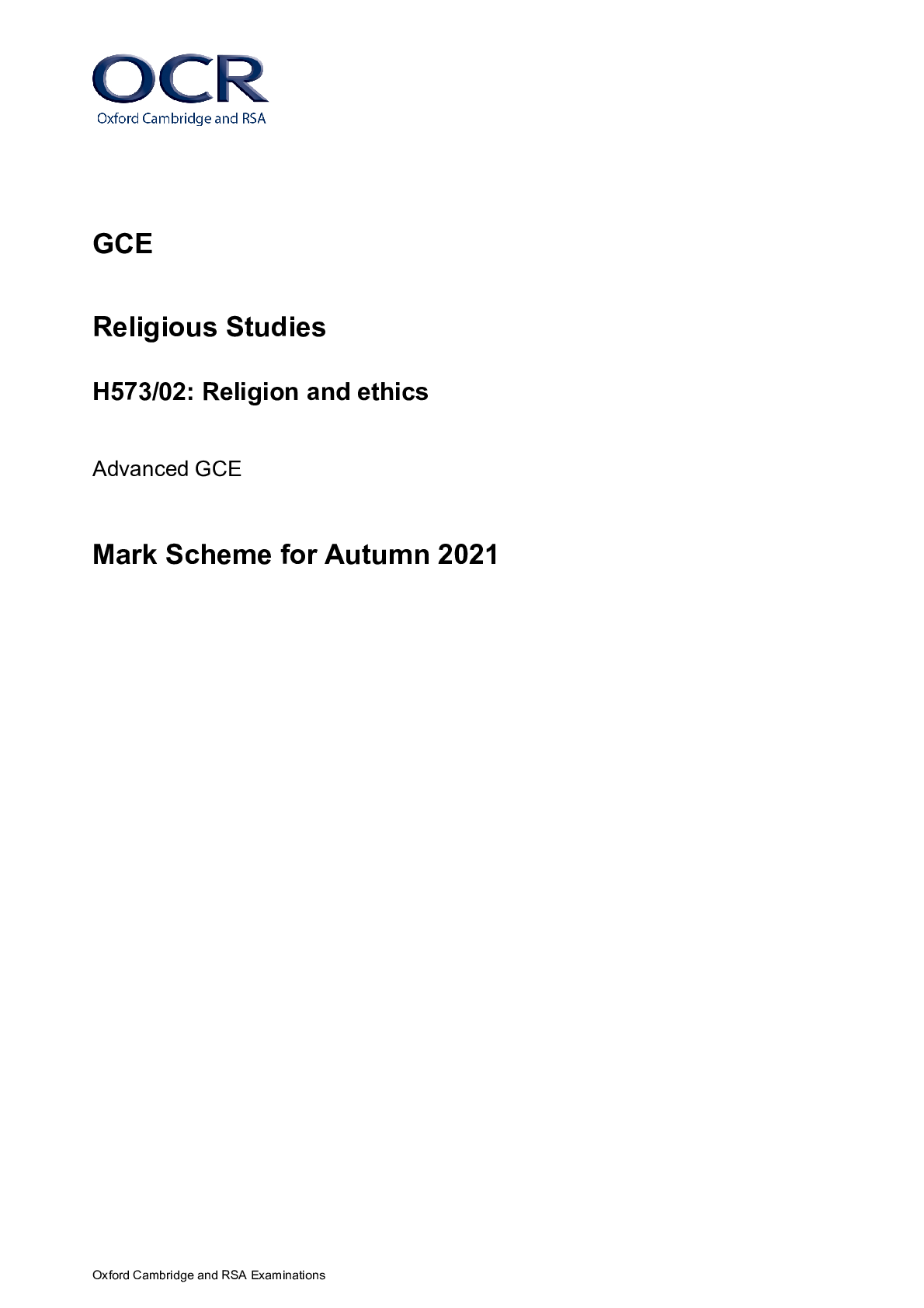
Buy this document to get the full access instantly
Instant Download Access after purchase
Add to cartInstant download
Reviews( 0 )
Document information
Connected school, study & course
About the document
Uploaded On
Oct 07, 2022
Number of pages
24
Written in
Additional information
This document has been written for:
Uploaded
Oct 07, 2022
Downloads
0
Views
37


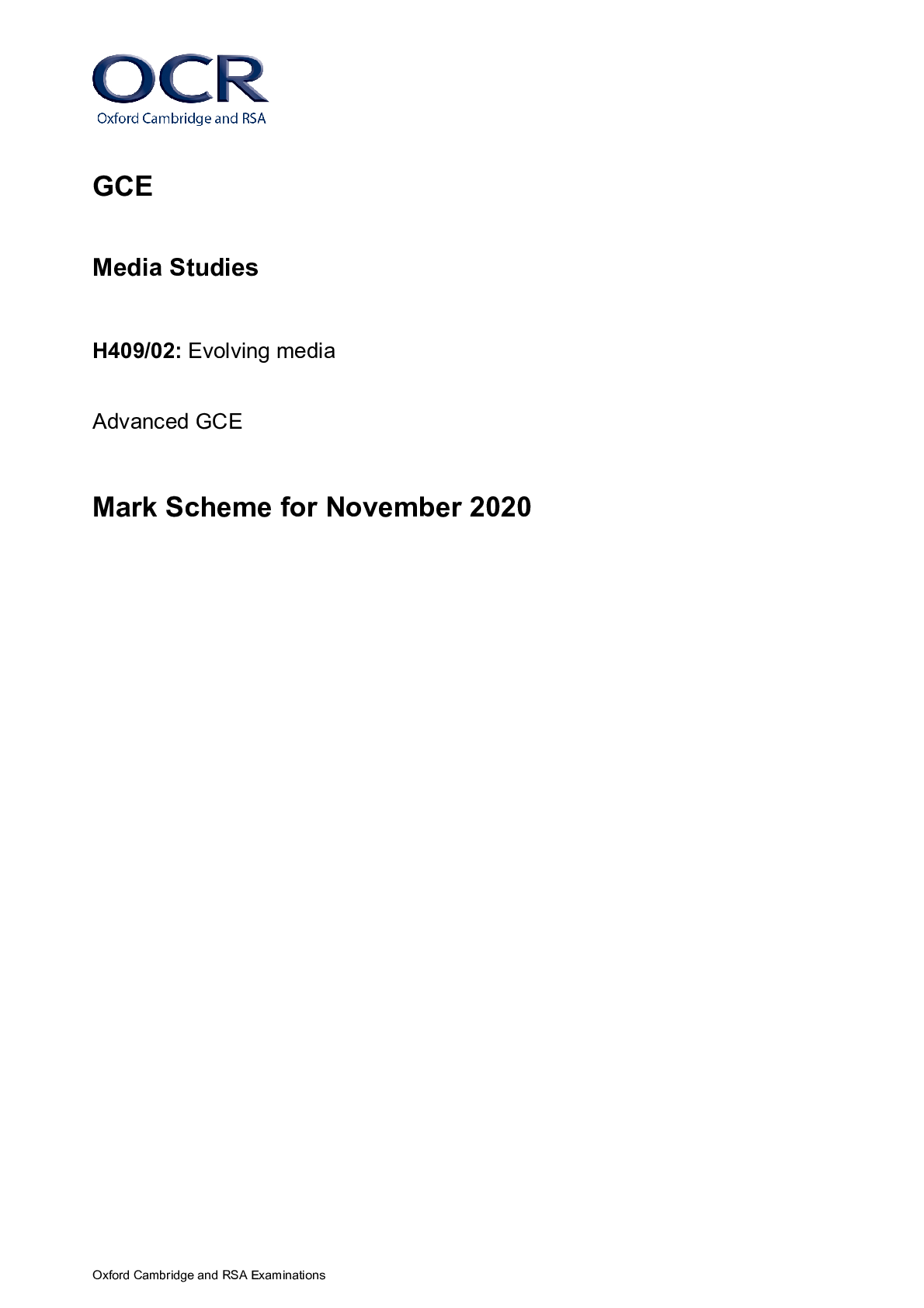
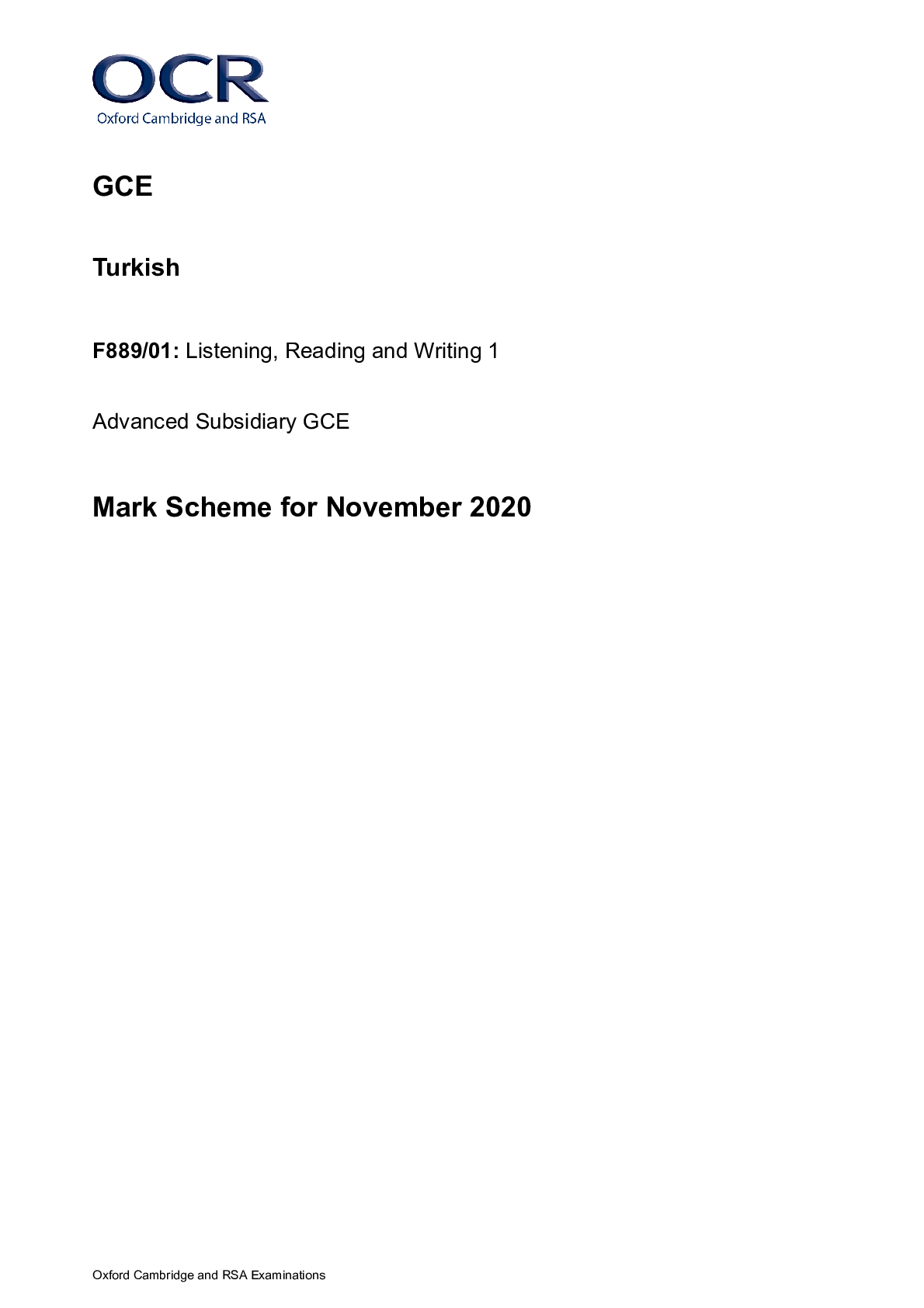
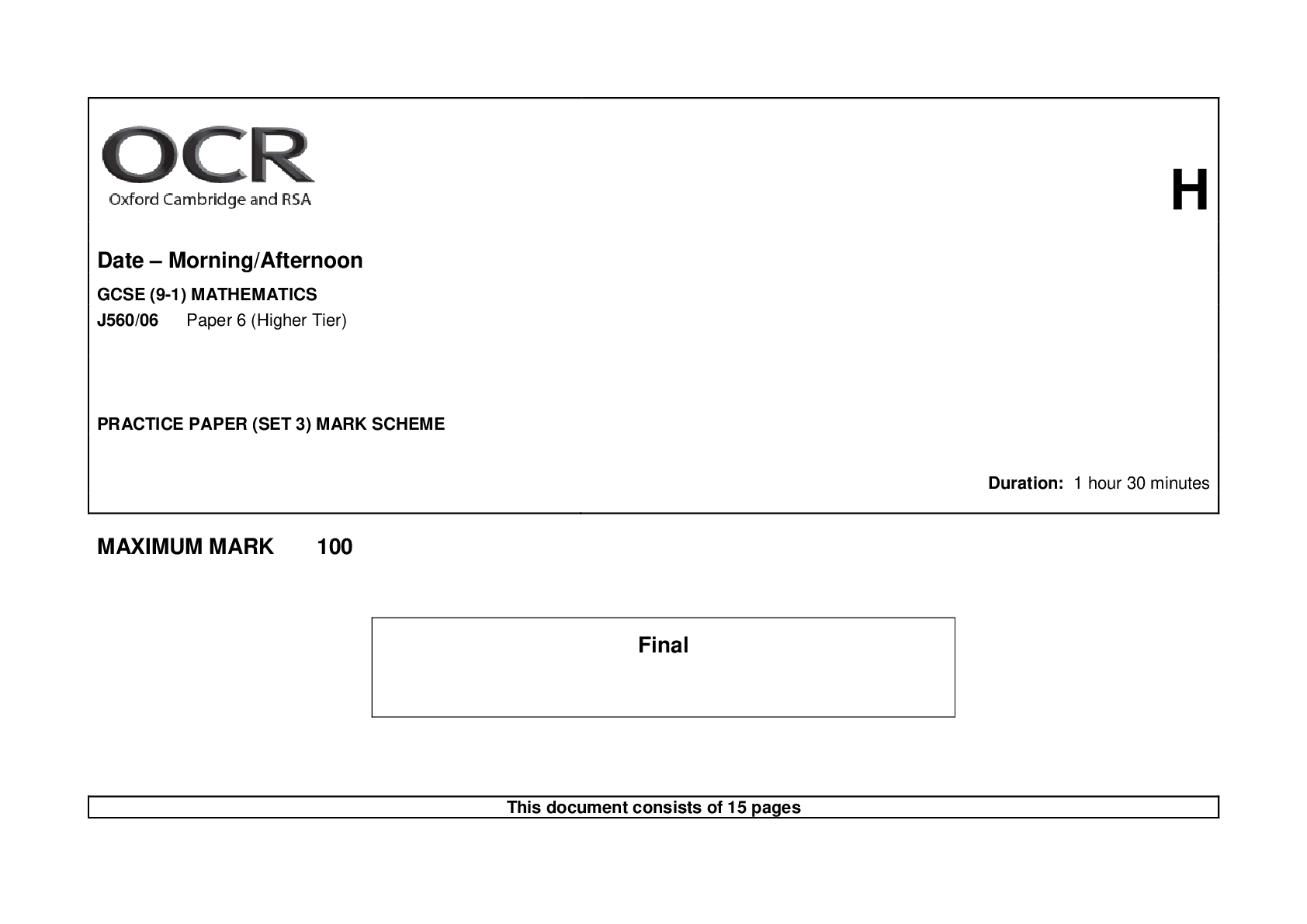



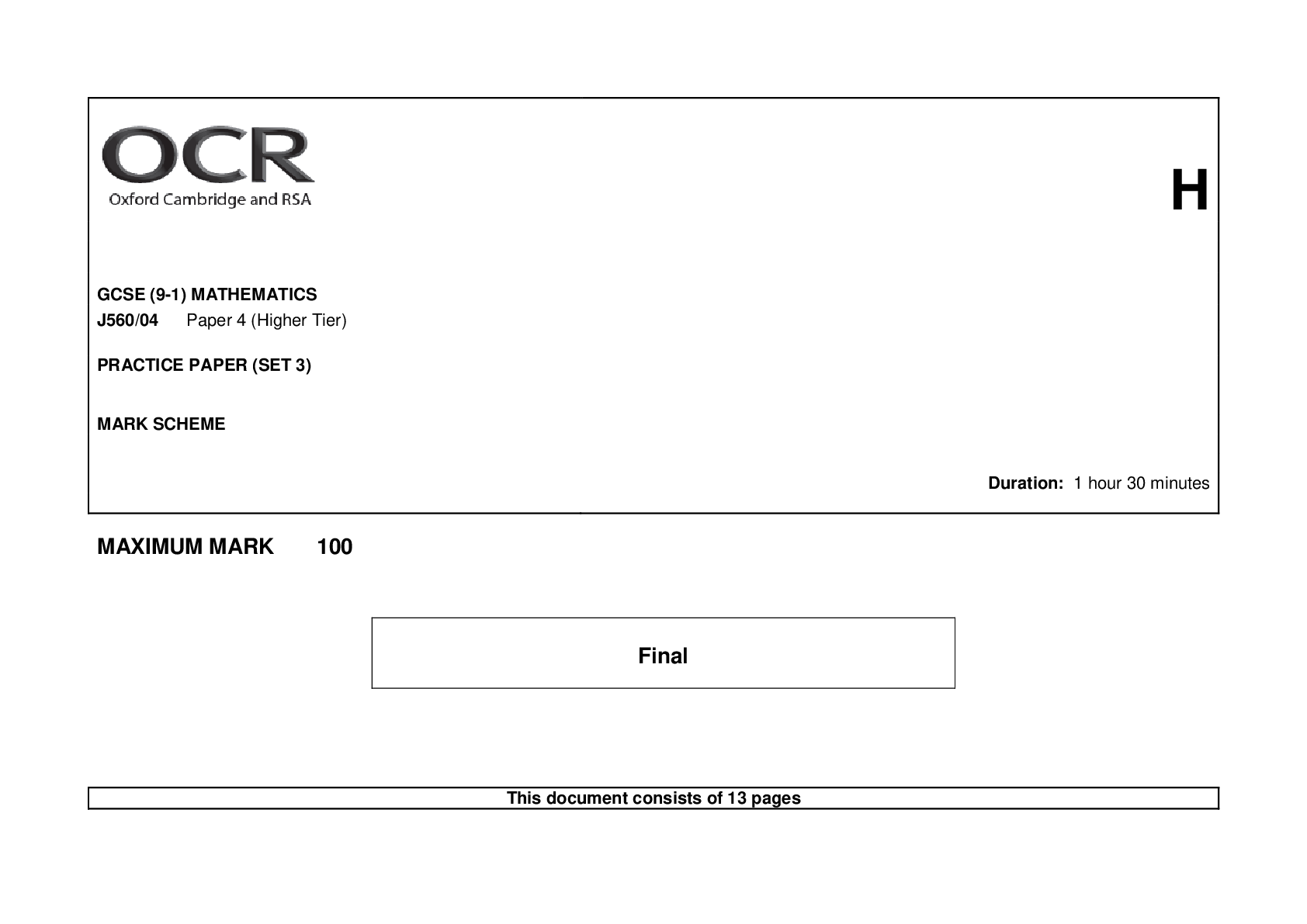
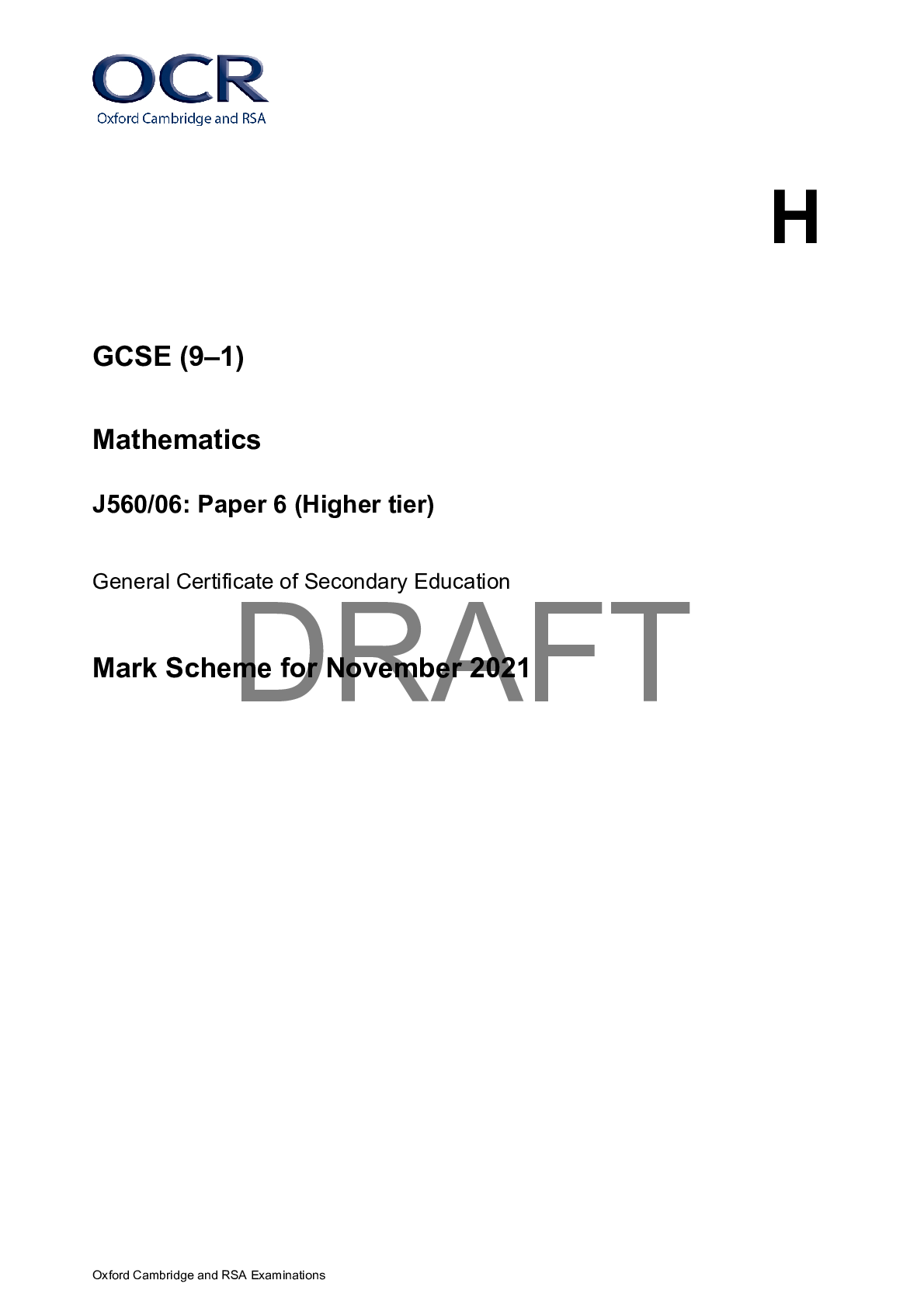

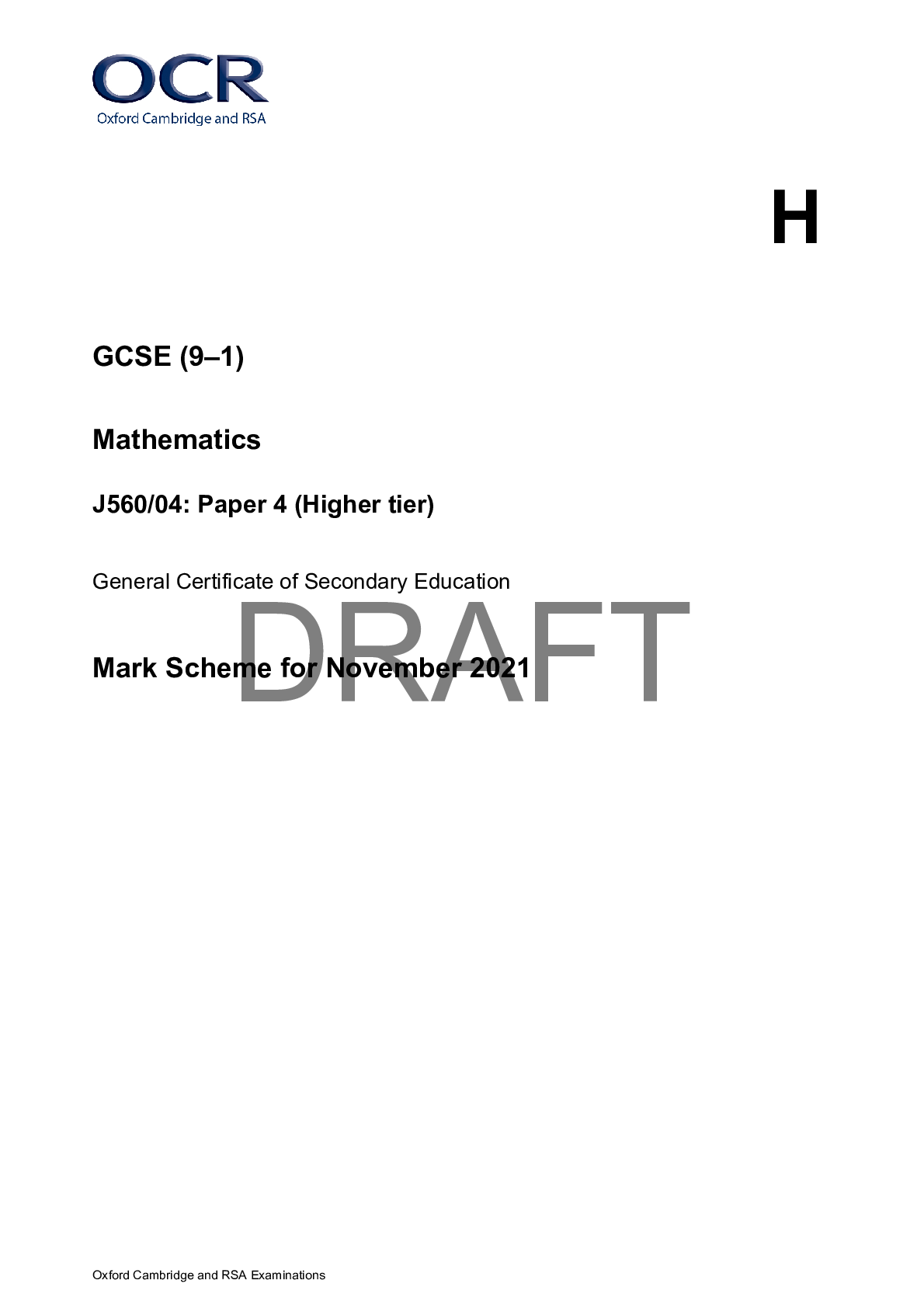
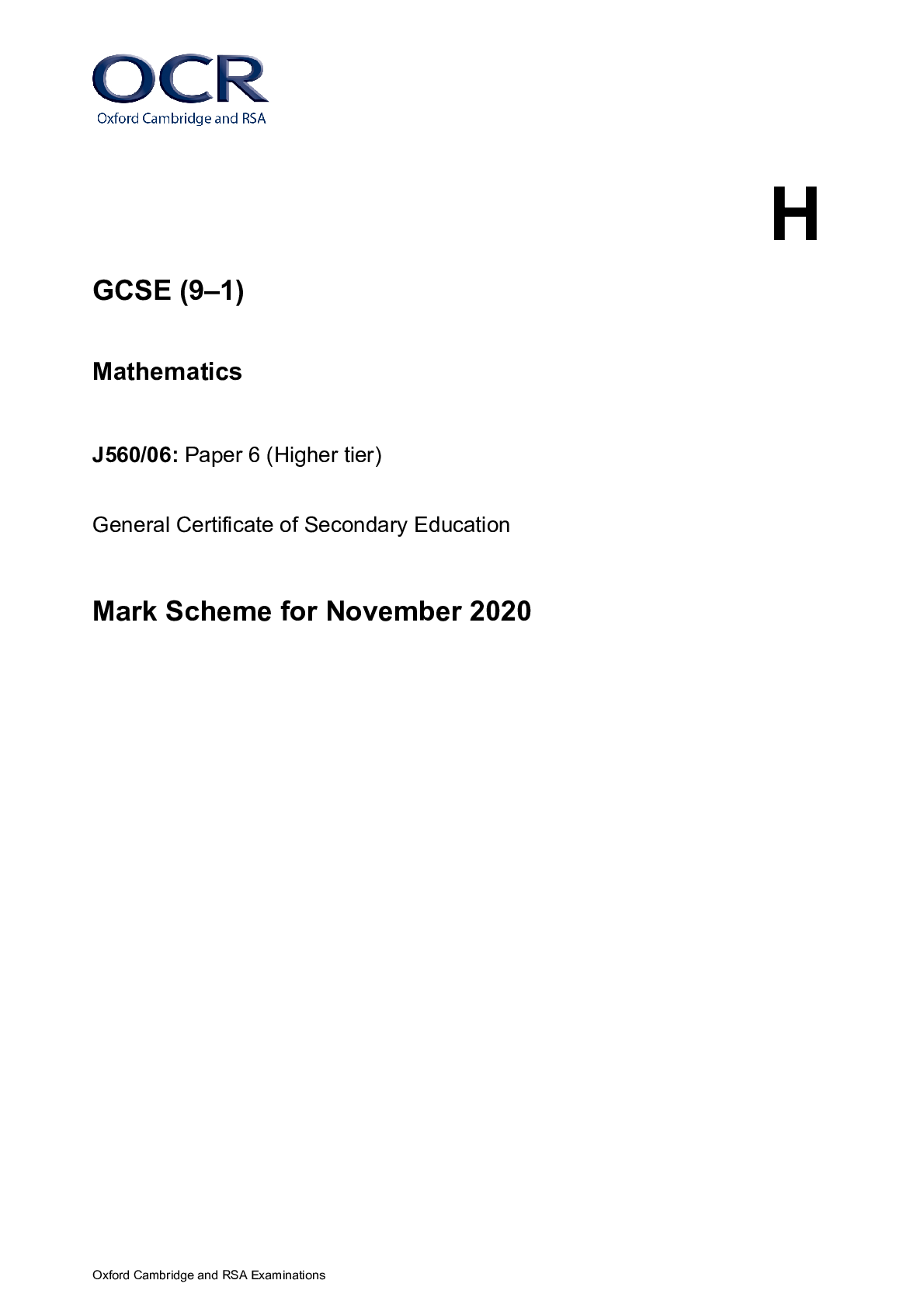
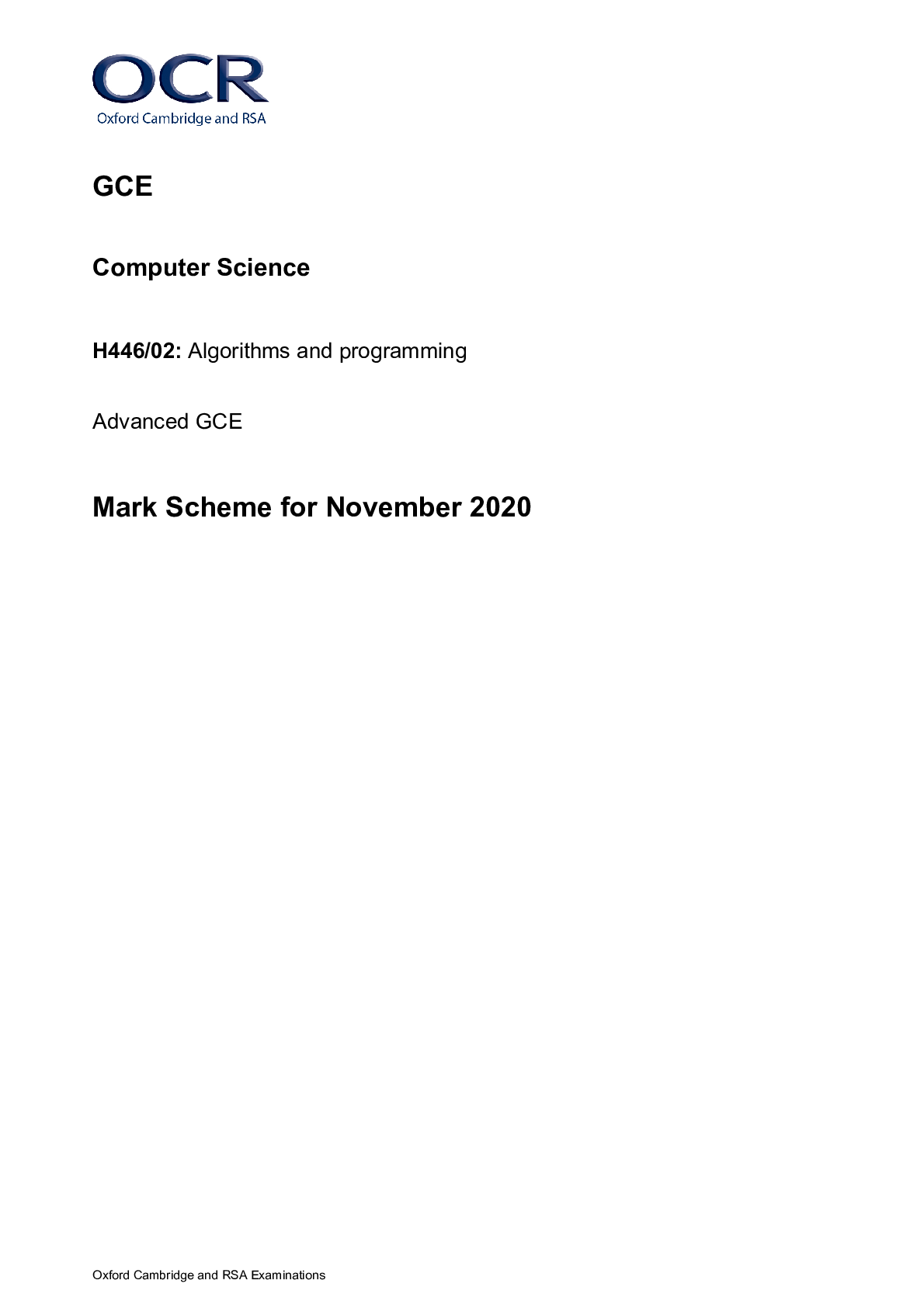
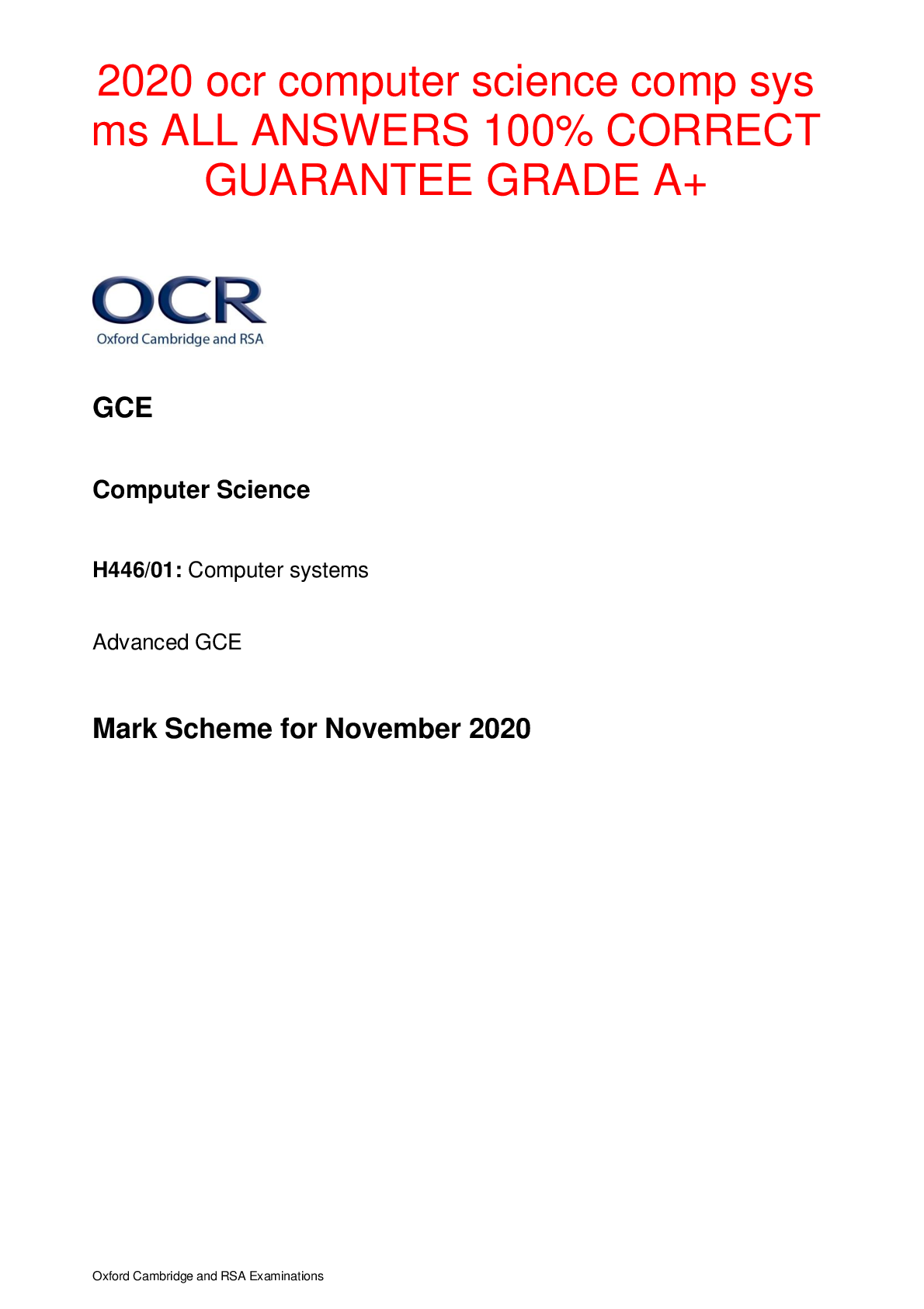

.png)
